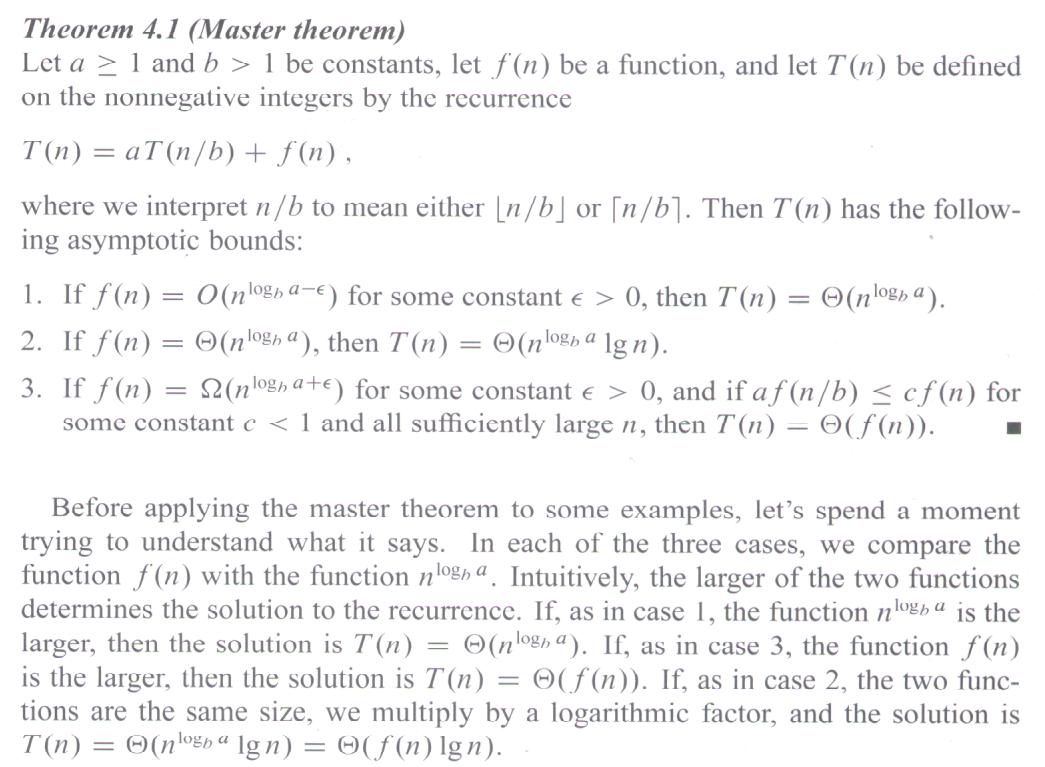
Click picture or here for full size picture.
CS 3343/3341 Analysis of Algorithms |
Recurrences
Master Theorem |

|
| Recurreces, solution by Master Method, Examples | |||||||
|---|---|---|---|---|---|---|---|
| Recurrence | a | b | logb(a) | nlogb(a) | f(n) | Case | Behavior |
| T(n) = 4 T(n / 2) + n2 | 4 | 2 | log2(4) = 2 | n2 | n2 | 2 | Θ(n2 log2(n)) |
| T(n) = 4 T(n / 2) + n | 4 | 2 | log2(4) = 2 | n2 | n | 1 | Θ(n2) |
| T(n) = 4 T(n / 2) + n3 | 4 | 2 | log2(4) = 2 | n2 | n3 | 3 | Θ(n3) |
| T(n) = 8 T(n / 2) + Θ(n2) | 8 | 2 | log2(8) = 3 | n3 | n2 | 1 | Θ(n3) |
| T(n) = 7 T(n / 2) + Θ(n2) | 7 | 2 | log2(7) = 2.807 | n2.807 | n2 | 1 | Θ(n2.81) |
| T(n) = 4 T(n / 2) + Θ(n) | 4 | 2 | log2(4) = 2 | n2 | n | 1 | Θ(n2) |
| T(n) = 3 T(n / 2) + Θ(n) | 3 | 2 | log2(3) = 1.585 | n1.585 | n | 1 | Θ(n1.585) |
| T(n) = 2 T(n / 2) + n*log(n) | 2 | 2 | log2(2) = 1 | n1 | n*log(n) | none | Master fails |